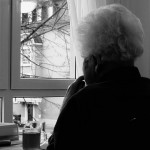Most of us have a tendency to hoard, keeping items of sentimental value and things that may come in useful, but some take it too far.
We have all seen the television programmes that show the horrors of hoarding and even Coronation Street had a character, Cathy, who lived in a dangerously cluttered home. It is good that, now the disease is acknowledged and taken seriously, help is available to those who are endangering their health and even their lives.
Recognised disorder
Of course there are people who cannot help themselves and need professional support. Hoarding is now recognised as an identifiable disorder and under the Care Act 2014 will be treated as a mental illness and shortly be granted disability status.
Hoarding UK is an organisation committed to increasing choice and control for people who compulsively hoard. I spoke with Megan Karnes, who is a fervent campaigner for the charity, after visiting her website.
Megan works with social services, local authorities and housing associations to provide help for hoarders of all ages. In fact, she is known in her area of London as the “Hoarder Whisperer”.
Her approach is to build a close relationship with the sufferer and help to clear the home with their agreement. It can be a long slow process, but as with all addictive behaviour, it can be resolved. However, working with older people, particularly those with pre-dementia, can be more difficult as they find it harder to learn new behaviour patterns.
Most care authorities now accept this as a form of mental illness so more can be done to get assistance and cleaning teams sent in when there is danger to the householder or their neighbours. In extreme cases people can be moved into temporary accommodation while their home is cleared, but usually this is done with their agreement.
Surprisingly many sufferers contact the website themselves and ask for help, which Megan is pleased to provide. She also supports professionals and is encouraging students and others interested in this disorder.
Since 2012, all of Hoarding UK’s services are provided free of charge, but recently it was decided that they needed to charge for training to fund the free services.
Help and support
Treatment can help people with hoarding disorder decrease their saving, acquisition, and clutter, to enable them to live safer, more enjoyable lives. There are two main types of treatment that help people with hoarding disorder: cognitive-behavioural therapy (CBT) and medication.
During CBT, individuals gradually learn to discard unnecessary possessions with less distress, diminishing their exaggerated perceived need or desire to save these possessions. They also learn to improve skills such as organisation, decision-making, and relaxation. For many people, certain anti-depressant medications may be helpful and may produce more rapid improvement.
Dr Naomi Fineberg, a specialist in OCD stated “When you are looking at obsessional patients, hoarders seem to stand apart, and they don’t respond well – if at all – to standard anti-obsessional treatments … many hoarders tended to believe they were acting rationally, and did not need help.”
You can get much more information as well as help and advice from www.hoardinguk.org.
Do you have similar problems or does one of your family have tendencies? Is there a house on your street where you feel help is needed? We should be interested to hear from you.
Some hoarding facts
- Some research finds that hoarding disorder is more common in males but more females ask for support (this has also been found to be equal in terms of how many of each gender hoard)
- There is no distinction between age, gender, ethnic group, socio-economic status, education or occupation
- Often there is a family history of OCD and or hoarding (50% in three studies identified these were a parent, sibling or offspring)
- Potentially only 5% of hoarders come to the attention of professionals.
In short, Hoarding Disorder is found across all ages, ethnicities, genders, religions, education levels, sexualities, etc. It is a stereotype to associate hoarding tendencies with older people.




